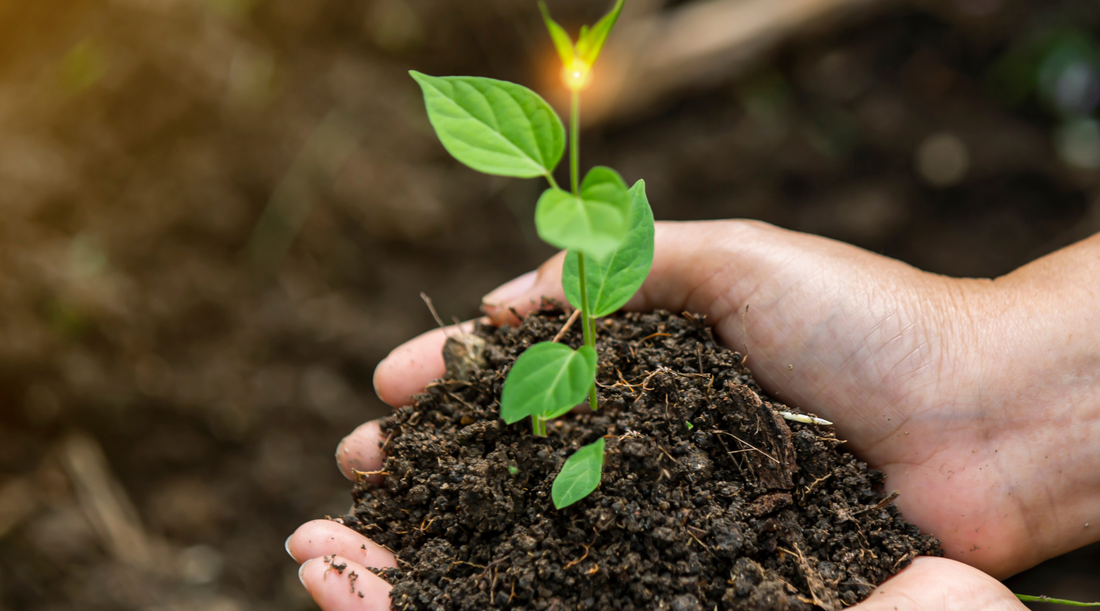
Planting in Summer: Essential Tips for Every Gardener
Gardeners may want to add new plant life to their gardens as summer unfolds. However, planting in late summer might be challenging due to the extreme heat. Proper timing and attention are essential for your garden to thrive in the summer heat.
This blog aims to help you plant successfully throughout the hot summer day. Let's make the most of this exciting time of year by gardening, whether you've done it before or not.
How Does Hot Temperature Effects Planting in Summer
Hot temperatures significantly influence plant growth. Here's a closer look at how heat can impact plant growth:
- Photosynthesis: While sunlight is crucial for photosynthesis, extremely high temperatures can damage the plant cells involved in the process.
- Transpiration: This can lead to excessive water loss, causing plants to wilt and suffer from dehydration.
- Respiration: When temperatures are too high, plants may respire faster than they photosynthesize, resulting in a net energy loss.
- Stress and Damage: Prolonged heat can cause physical stress and damage to plants. Heat stress can also make plants more vulnerable to pests and diseases.
- Seed Germination: Hot temperature can dry up or prevent seeds from germinating.
How to Keep Your Summer Plants Thriving
Here are some steps you can take to help your plants thrive:
1. Proper Watering:

Watering is one of the plant's growing requirements. New plantings need to be fully established before the heat of summer erupts. Water your plants gently with a watering can. But remember, soggy soil can kill plants; thus, too much watering is not advisable.
Also, small-rooted plants such as annual and perennial flowers benefit from soakings every 2 or 3 days – even once or twice a day. This encourages roots to grow deeper into the soil, where it's cooler and soil moisture is more stable.
2. Mulch Your Garden:
Applying a layer of organic mulch like compost, crushed leaves, cocoa bean hulls, or bark dust around your plants. These help conserve soil moisture, reduces weeds, and cover the bare root. Also, organic mulches like straw, bark chips or shredded leaves can improve soil quality.
3. Shade Protection:
For extremely hot weather, consider using shade cloth, especially for sensitive plants. This can filter sunlight and help to reduce the temperature.
4. Pruning:

Remove any scorched or dried-out parts of the plant. This allows the plant to focus its energy on new growth and recovery, which can help prevent disease.
5. Check for Pests and Diseases:
Heat-stressed plants are more susceptible to pests and diseases. Keep a close eye on your plants for any signs of trouble and treat them promptly.
6. Feeding:
Many plants benefit from regular feeding during the growing season. Use suitable plant fertilizer and soil enhancers. Follow the instructions on the pack to ensure your plants get the nutrients they need to thrive.
7. Plant Care:
Consider moving potted plants away from direct sun. Please keep them in a partly shady location to protect them from summer's heat. You can also display them in a plants stand indoors. For garden plants, creating a windbreak can help protect them from hot, drying winds.
8. Patience:
Continue frequent watering, providing consistent, gentle care, and closely monitoring your plants. With time, they should bounce back.
Right Plants for Late Summer Planting
As the days grow shorter and the warmth of summer lingers, late summer is an ideal time for planting in many gardens. Although it may seem like the season for planting is over, late summer offers unique opportunities to enrich your garden. Choosing the right plants can ensure a flourishing garden well into the fall and prepare your landscape for the coming year.

1. Cool-Season Vegetables
Late summer is perfect for sowing cool-season vegetables that thrive in cooler weather. Consider planting crops such as spinach, kale, and Swiss chard. These greens not only tolerate the cool temperatures of fall but can also provide fresh harvests well into winter with proper protection.
2. Hardy Herbs
Many herbs can be planted in late summer and will thrive as temperatures cool. Try sowing cilantro, parsley, or dill. These herbs will establish themselves before the first frost, giving you a continuous supply of fresh flavors for your autumn dishes.
3. Perennials
Late summer is an excellent time to plant perennials that will establish roots before the first frost. Look for hardy varieties like coneflowers, black-eyed Susans, and sedum. Planting now allows these perennials to develop strong root systems, leading to vigorous growth in the spring.
4. Autumn-Blooming Flowers
To keep your garden vibrant as summer fades, consider adding autumn-blooming flowers. Chrysanthemums and asters are fantastic choices that will add a splash of color to your garden as the season transitions.
5. Bulbs for Spring
Planting bulbs in late summer is a great way to ensure a colorful garden come spring. Daffodils, tulips, and hyacinths can be planted now, allowing them to establish roots before winter sets in. You’ll be rewarded with vibrant blooms that herald the arrival of spring.
Techniques in Planting Under the Summer's Heat:
- Seeds: Some seeds are perfect for late summer planting, depending on the plant species. Besides, starting seeds when the temperature is hot aids in quick germination, allowing you to plant earlier for the second harvest. Place the seeds at the depth recommended on the seed packet and cover them lightly with soil. Water them gently to avoid dislodging the seeds.
- Bulbs: Flowering bulbs should be planted deeper, typically two to three times as deep as the bulb is tall. Place them pointed side up in a hole and backfill them with soil.
- Potted Seedlings: Dig a hole twice as wide as the root ball when transplanting seedlings. Place the plant in the hole, ensure the top of the root ball is level with the soil surface, then backfill the hole. Then water thoroughly after planting.

When Is The Best Time to Plant in Summer:
Timing can be critical in summer planting. If it's too hot, young plants can become stressed and struggle to establish themselves. Start new summer plantings in the early morning when soil slightly moist or when the temperature cools in the evening. It is also a great time to plant on cloudy or overcast days.
Conclusion
In conclusion, late summer is a perfect time to reconnect with nature through gardening. Beat the heat by planting early in the morning or late in the evening. This helps keep the stress levels low for you and your new plants.
Proper planting methods are key to success. Remember, seeds need a gentle soil covering and a regular watering schedule. Embrace the challenge and joys of searing heat gardening. Your reward will be a flourishing garden that reflects your care, patience, and dedication.
We'd love to hear about your late summer planting experiences. Share your challenges in the comment section, from initial planting to your victories all season long. Let's learn and grow together in our summer gardening journey!
Happy Summer Gardening!
